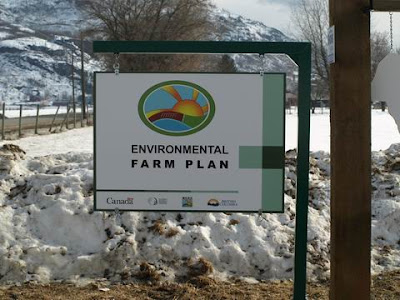The opinion below appeared in the Globe and Mail newspaper today 25th May under the heading " We can't keep offering cheap calories to the consumers." It seems the business world is worried about profitability in the agri food sector along with the retailers, shippers and manufactures but not a word about sustainability of the farmers who are paid 1960s prices. We are the goose that lays the golden egg but we can't keep laying with out some feed!! Big food has made money by cutting costs at the farm gate for raw commodities so as to give cheap food to the masses thus ensuring continued disposable income for all the other stuff our society thinks it needs and big business makes to sell them at inflated profits. If we had to pay 20, 30 or 40% of our income on food like days gone by and the increase showed up at the farm gate I feel us farmers might smile a little more often and this one may well trade in his 17 year old Volvo for something a little newer! Raw materials are the fly wheel of any economy, pay the true value for them ( ie Parity, costs plus wages plus retirement contributions )and the rest will take care of its self. Any costs for food safty are passed down to the farmer in lower crop prices to cover the agrifood sectors costs.
The article in full below, there are good points but the farmer who makes it all happen seems to be left out!
Once again, the only price category that showed any signs of upward pressure in April was food. Although food prices in retail stores have gone up by 8.3 per cent in the past year, a broader perspective on global market conditions indicates Canada is actually in a good situation. Not only are we better positioned than most countries to absorb adverse economic developments, but higher prices become investments in food industries, local and global, that sorely need redevelopment to deal with problems such as food safety and production efficiency.
Food remains cheap in Canada and has been for decades. Canadian households barely spend 10 per cent on food every year. Thirty years ago, the figure was between 25 and 30 per cent. Food prices at retail in other industrialized countries are much higher than they are in Canada. Market conditions are even worse in developing countries. In a poll of developing countries published recently, a majority of people in nearly all of them say that rising food costs have negatively affected them.
Higher food prices are desirable for two reasons. The first is food safety. Because of food recalls of wide scope in recent years, safety is becoming a critical issue for governments and the private sector. We are asking agrifood companies to spend more on traceability systems, conduct more inspections and apply rigorous protocols. All these initiatives cost money.
It is increasingly challenging for the industry to focus on new safety initiatives when it does not have access to more wealth. For years, we have seen companies change their cost structure and develop centralized operations in order to offer cheap calories to consumers. In addition, global trade is making distribution systems highly complex. As consumers, if we want our food to be safeguarded, we should expect to pay more. The latest polls on this subject, however, suggest consumers are still not willing to do so. That will need to change before Canada gets hit by a food safety catastrophe.
The second reason for higher food prices is capital investments. After commodity price hikes last year, fertilizer companies embarked upon major expansion projects. Mosaic, Agrium and Potash Corp. all announced projects as a result of increasing potash prices, a major component for soil fertilizers.
Potash prices rose significantly last year for one reason: Demand for fertilizers was up because farmers wanted to grow more efficiently. At the same time, farmers naturally wanted higher yields because commodity prices were higher.
Rapid economic growth in developing economies such as China is creating a transitory imbalance: too much demand, not enough supply. With more fertilizers, world agriculture will be capable of producing more, and doing so will eventually stabilize commodity and food prices at retail for the longer term.
In Canada, if we want affordable food in the future, prices at retail need to increase at a reasonable pace in the present. This may seem counter intuitive, but higher prices will bring more investments and allow developing countries to build production capacity.
If this happens, an increase in supply will eventually force prices to decrease. Canada, the biggest producer of potash in the world, has a definite role to play in improving global food production.
In the recent past, low food prices at retail have compelled the industry to do more with less. As a result, we have had little or no innovation, more food-borne illnesses, more poor farmers and fewer capital investment projects.
Now, food is regularly in the headlines and paradigms are finally shifting toward food consciousness. More wealth within the industry will be beneficial for the common good. Organic and fair-trade products will become more attractive because the gap between retail prices of conventional food products and those of premium items is diminishing.
Canadian-based biotechnology firms may also find bigger footholds in world agricultural markets for which they can provide sound, genetically engineered products.
But higher prices alone are not the food industry's redemption. This shift in prices invites consumers to rethink how they consume food and how they perceive the meaning of nutrition in their lives. Higher prices may hurt some consumers at first, but we need to invest in the future of food in order to benefit both consumers and the agrifood industry.
Sylvain Charlebois is associate dean, Kenneth Levene Graduate School of Business at the University of Regina.
Join the Discussion:
Sorted by: Oldest first
Latest Comments



















































